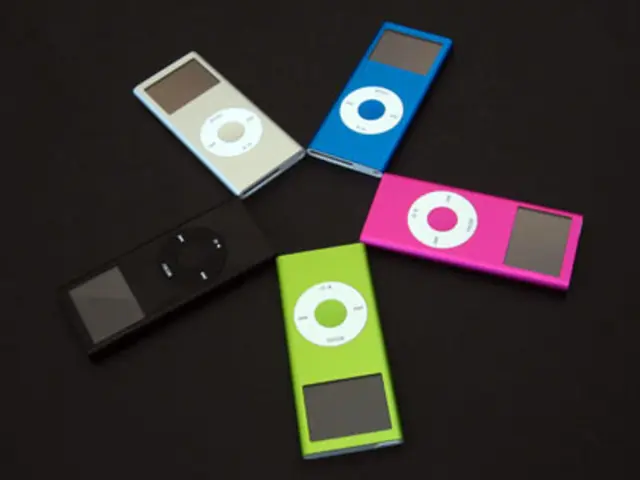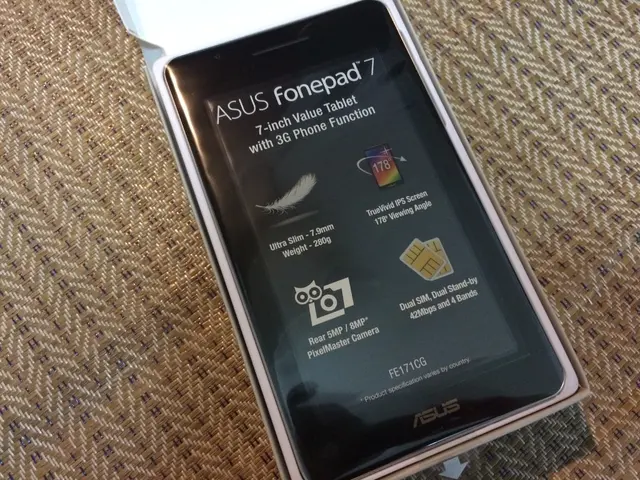Making Sense of the New EU Energy Label for Your Smartphone and Tablet: A Guide for Consumers
Mandatory Energy Labeling for Smartphones and Tablets in the EU Imminent - Mandatory Energy Rating for Smartphones and Tablets in EU Imminent
Want to know how energy-efficient your next smartphone or tablet will be? The European Commission has got you covered! As of June 20, 2025, these devices will be sporting a nifty new energy label. But what exactly does this label mean, and how can it help you make smarter purchases? This guide simplifies the label's key components and what you can expect from the manufacturers.
The Smart Phone and Tablet Energy Label: What You Need to Know
The energy label for your device provides information on four essential aspects: energy efficiency, repairability, battery life, and durability against drops, dust, and water. Effective June 2025, look for these indicators on the sticker:
- Energy Efficiency: This rating, from A to G, shows how much power your device uses. The higher the grade, the more energy-efficient it is, meaning you'll save money on your electricity bill over time.
- Reparability: The scale, A to E, indicates how easily the device can be repaired. An easier-to-mend phone or tablet will generally have a lower environmental footprint, as its parts can be reused or recycled more effectively.
- Repeated Free Fall Reliability: This score shows how robust the device is against repeated drops. A score of A means it can withstand multiple tumbles, reducing the risk of costly repairs.
- Battery Endurance: Simply put, this tells you how many charges your device's battery can handle before losing too much juice. Manufacturers must guarantee that batteries can retain at least 80% of their initial capacity after 800 full charge cycles.
- Resistance to Dust and Water: The energy label will also provide information about the device's durability against dust and water ingress. This data is often related to IP ratings, which you might have seen on other electronic devices.
These metrics aim to give consumers a straightforward way to compare devices and make more informed decisions. It's not just about how much energy the device uses but also about its durability and potential for repair or recycling.
Eco-Friendly Design: The Ecodesign Requirements
In addition to the energy label, manufacturers will also be subject to ecodesign rules. These requirements are designed to promote more sustainable design and lifespan for devices:
- Software Updates: Brands must support software upgrades for at least five years, ensuring that devices can take advantage of newer features and remain functional for longer.
- Build Quality: Manufacturers will be encouraged to use higher-quality materials to improve the device's durability, as well as make repairs easier.
- Battery Performance: Minimum battery requirements ensure that batteries remain effective for a long time while laying less of a strain on the environment.
- Applicability: The new ecodesign and energy labeling requirements apply to smartphones, feature phones, cordless phones, and slate tablets placed on the EU market. However, exceptions have been made for some device types, including tablet computers with detachable keyboards, devices with flexible main displays, and high-security communication devices[2][5].
These regulations have been crafted with a goal in mind: to make devices more sustainable and extend their lifespans, potentially reducing the need for consumers to replace their devices as frequently.
Sustainability Starts With You: Embrace the Future of Smartphones and Tablets!
Now that you're equipped with the inside scoop on the new EU energy label and ecodesign rules, you can make more informed, eco-friendly, and cost-effective smartphone and tablet purchases starting in 2025. So, don't be left in the dark—get ready to embrace a greener, more sustainable future!
- Smartphone
- EU
- Mandatory Labeling
- Energy Label
- Brussels
[1] European Commission. (2023). [Proposal for a Regulation of the European Parliament and of the Council on Ecodesign requirements for smartphones, tablets, electronic watches and wristbands with a display, electrical shaving and hair grooming equipment, digital screens and digital self-weighing scales]. European Parliament and Council of the European Union.
[2] European Commission. (2021). [Commission Recommendation (EU) 2021/237 of 5 February 2021 on smartphone sustainability initiatives]. European Commission.
[3] European Commission. (2022). [Impact assessment of a mandatory energy label for smartphones and tablets]. European Commission.
[4] European Commission. (2022). [Public consultation on a mandatory energy label for smartphones and tablets]. European Commission.
[5] European Commission. (2023). [Press release: EU agrees on mandatory energy label for smartphones and tablets]. European Commission.
- By 2025, whenmandatory labeling for European smartphones and tablets begins, consumers should prioritize devices with high energy efficiency ratings and good reparability scores to promote energy savings and longevity in line with the Community policy's eco-friendly design.
- In pursuit of a greener future, consumers should explore vocational training opportunities to learn about repairing and maintaining their smartphones and tablets, ensuring they take advantage of extended lifespans and reduced ecological footprints-technology provides the tools, smartphones and tablets offer the challenge.








